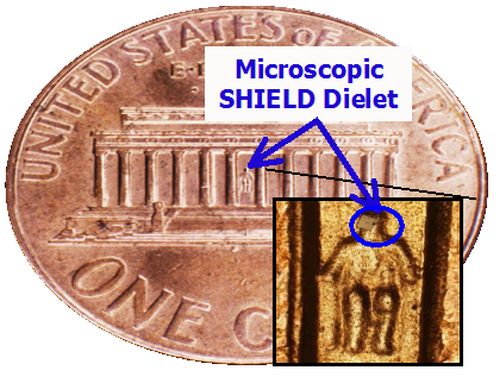Northrop Grumman is heading a four-year project for the Defense Advanced Research Project Agency (DARPA) to devise a tiny radio frequency identification chip that could prevent the counterfeiting of electronic parts that end up in avionics or circuit boards for other devices. The goal, explains Scott Suko, a Northrop Grumman consulting engineer, is to develop a near-field high-frequency (HF) RFID dielet. The resulting chip—which would measure only 100 microns by 100 microns (0.004 inch by 0.004 inch) in length and width, including an onboard antenna and temperature sensor—would be embedded in integrated circuits or circuit boards. The entire system—the chip, an RFID reader and specialized software—is being created for DARPA’s Supply Chain Hardware Integrity for Electronics Defense (SHIELD) program, and is intended to thwart counterfeiters from selling inauthentic or recycled components to the U.S. government or to commercial companies.
Suko presented details about the project at the RFID Journal LIVE! 2016 conference and exhibition, held last month in Orlando, Fla.
The chip would be about the size of Abraham Lincoln’s head on the tail side of a penny—the figure seated in the Lincoln Memorial. In fact, it is so small that 3.5 million dielets could be cut from a single wafer measuring only 300 millimeters (11.8 inches) in diameter.
When work on the project is completed in 2019, DARPA expects that the chip will be used to verify the authenticity of very small electronics, including integrated circuits used by both the defense and commercial industries.
“There’s a tremendous problem,” Suko says, including the sale of old components being passed off as new ones, that could threaten the effectiveness of the devices into which they are built. The U.S. Department of Defense (DOD) has taken measures to develop technology that could prevent any incidence of counterfeit components that could make their way into the American supply chain. “The DOD is making countermeasures against counterfeits a priority,” he states.
Northrop Grumman, with help from RFID Global Solution, is tasked with developing a solution that would make it possible to identify a component and confirm its authenticity. The tiny dielet would have an encrypted ID number and a built-in sensor that could confirm not only the product’s authenticity, but also, based on temperature data, whether it has been exposed to certain manufacturing processes. RFID Global Solution will develop the electronics parts authentication application, based on its Visi-Trac software platform.
Sandia Labs is working to create a thin-film temperature sensor that can detect temperature exposure to at least 220 degrees Celsius (392 degrees Fahrenheit)—a temperature threshold that an electronic component would likely cross during a manufacturing or re-manufacturing process. Such high temperatures would cause a change to the sensor’s electrical resistance when the dielet is read by an RFID reader. If a reader detected such a change, it could indicate that the temperature had risen to the manufacturing level (and possibly how many times that had occurred), thereby providing a warning that an electronic component was likely to be a counterfeit or to contain a used part.
With the SHIELD concept, the dielet would be placed at a marked position in the package of a component to be tracked. An inexpensive near-field RFID reader would then be used to power the dielet long enough to exchange information, including the dielet’s ID, authentication proof and an update of its passive environmental sensor readings.
NoiseFigure Research, a technology company located in Seattle, Wash., is developing a near-field HF reader in the form of a probe that would capture the SHIELD die’s ID number and sensor data at close range. Kilopass Technology Inc., based in San Jose, Calif., will provide very low-power, one-time-programmable memory for incorporation into the dielet. The Georgia Tech Packaging Research Center, a leader in system-on-package research, is developing a dicing and handling method for the extremely small dielets.
The RFID tag could be read in order to confirm component authenticity at any point along the supply chain. The parties that would be expected to read the tags would include subsystem and system manufacturers, to confirm the components’ authenticity prior to assembly and delivery to manufacturers of a product, such as an aircraft.
The dielets will be designed so that they will become inoperable if removed from the component to which they are initially affixed.
“The initial effort is targeting integrated circuits used by both the defense and commercial industries,” Suko says, “and the ultimate vision is that SHIELD technology would be applied broadly to ICs throughout the global electronics industry.”
The Department of Defense already mandates supply chain traceability for all defense contractors, and these mandates could drive DOD contractors to be the first adopters of the SHIELD system. However, Suko says, manufacturers of commercial products are expected to use SHIELD technology as well. The SHIELD dielets could be utilized not only in ICs, but also in circuit boards and other components. DARPA’s price target is one cent per dielet—cheap enough to enable insertion into even low-cost devices.
The development program consists of three phases. During the first 18-month phase, slated to end in mid-July 2016, the SHIELD technology is being developed on a basic level and demonstrated. Northrop Grumman will develop and test chips and a near-field reader for the key dielet functions, as well as demonstrate the SHIELD software.
During phase two—which is expected to be finished by January 2018—Northrop Grumman will complete the fabrication and testing of a fully functional dielet, demonstrate full end-to-end authentication of a SHIELD dielet, and deliver 1,000 SHIELD dielets for component insertion.
The third and final phase, ending in January 2019, will consist of demonstrating SHIELD dielet insertion on an IC or other product, along with deployment and network access at various original equipment manufacturers (OEMs). “This will include testing in real scenarios where counterfeit parts are intentionally inserted to assess the effectiveness of the SHIELD system,” Suko explains. Production and full-scale deployment could begin sometime in 2019.



